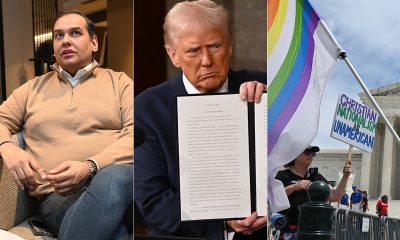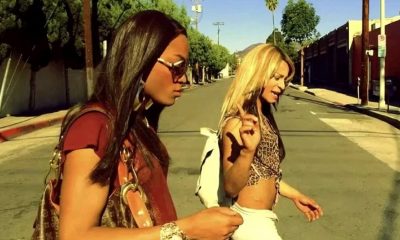a&e features
Caitlyn Jenner: American hero or ‘arrogant’ dilettante?
Former Olympian’s prominence a mixed bag for trans community

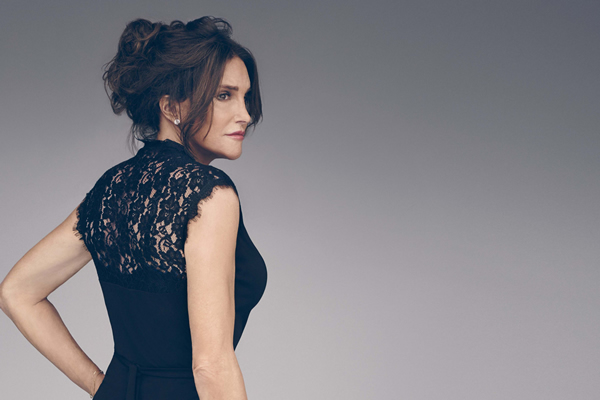
Transgender visibility in mainstream culture is at an all-time high thanks to Caitlyn Jenner’s media exposure this summer. (Photo courtesy NBC Media Village)
Few would argue that Caitlyn Jenner is the most prominent transgender person in the country right now.
The Olympic champion, who found a second wind of fame as patriarch on reality show “Keeping Up with the Kardashians, is now in the national spotlight after coming out in a Diane Sawyer interview on ABC’s “20/20” that aired in April, a Vanity Fair cover story and huge fashion spread in its July edition and a new reality show. She’s halfway through the eight-episode initial run of her own show “I Am Cait,” which airs Sunday nights at 8 p.m. on E!
For Jenner, who has publicly admitted to shortcomings as a parent to the four children she had with her first two wives — Burt, Cassandra, Brandon and Brody, all of whom have declined to participate on “I Am Cait” — there is early evidence that she hopes to be a worthy unofficial spokesperson for the transgender community. On the two-part Aug. 2 and Aug. 9 episodes, Jenner takes a road trip with newfound LGBT allies and discusses whether she’s a suitable person for the cause considering her new fame as a transgender icon.
Some transgender activists have approached the situation with a raised eyebrow. Posing in high-end fashion gowns and corsets in Vanity Fair, for some, highlights the huge gulf that exists between Jenner and the kinds of homeless transgender women of color Washington-based activists such as Earline Budd at HIPS (a resource agency for sex workers) and Ruby Corado (of Casa Rudy, a local LGBT resource center) have worked with for years, as well as everyday transgender people who struggle with health disparities, income inequality, access to health care for various gender-related procedures and a wide spate of other well-documented issues. Many agree Jenner’s prominence is a good thing but could it send the message to the straight, middle-America heartland that Jenner is anything close to representative of the trans experience?
Mara Keisling, executive director of the National Center for Transgender Equality, says it’s important to remember two major factors: both the unsung heroes of transgender rights who’ve been working on these issues for decades — she mentions names such as attorney Shannon Minter, activist Marsha C. Botzer, author/artist Kate Bornstein and several others — as well as recent transgender celebrities such as writer/activist Janet Mock and actress Laverne Cox (Sophia on “Orange is the New Black”).
While nobody’s calling it a contest, Keisling says it’s important to keep Jenner in perspective.
“I think Laverne and to a much lesser extent Caitlyn has done us all a really big favor by coming out,” Keisling, a trans woman, says. “I’m probably not in a majority position on that, but I think what Laverne and even Janet Mock have done is in a lot of ways bigger than the Jenner thing, which is burning really brightly right now, whereas Laverne has had this really fiery glow for a couple years now and it doesn’t show any signs of subsiding. I just cannot say enough about what Laverne has done. Being a model of possibility for trans women of color at a time when we really needed that and in a way that could really change some things, she’s done that really smartly and graciously and amazingly.”
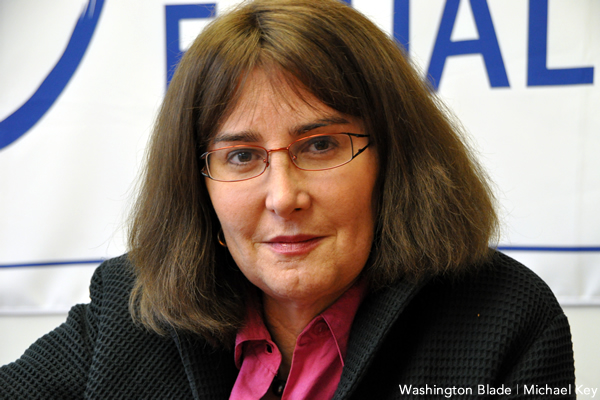
Executive Director of the National Center for Transgender Equality Mara Keisling (Washington Blade photo by Michael Key)
Dr. Marci Bowers, a California-based trans gynecologist who performs gender reassignment surgeries and has been an outspoken advocate for trans rights for many years, says she “has a tremendous amount of respect” for Jenner, but says she also has concerns.
“Stepping on the stage and kind of self anointing as the spokesperson for the trans community — and I really don’t think she does this intentionally — but it smacks of being a little bit arrogant and a little naive to the community,” Bowers says. “She must not forget the real pioneers, people like (tennis player) Renee Richards who came out in the 1970s — now that was difficult. … I’ve done hundreds of series and documentaries and these are things that have paved the way for Caitlyn Jenner. … She is literally standing on our shoulders and it would be nice if that was acknowledged. It seems painfully obvious to me. I haven’t watched all of her programming but from what I’ve seen, she doesn’t seem to get it.”
Bowers agrees, though, that Jenner deserves a grace period for being new to LGBT matters.
“I hope acknowledgement will come in time,” Bowers says.
Long-time activist Dana Beyer of Gender Rights Maryland, a trans woman and former eye surgeon who has blogged extensively on Jenner for the Huffington Post, says, “I don’t think there’s any question” that Jenner is now “the most prominent trans person in the world and in history,” an occurrence she calls “a good thing.”
“I just hope the point is made that she is not everyone and we all have different stories,” Beyer says. “That is true of any movement but given the fact that there are so few trans people in the public eye, it becomes even more potent. I have no problem with it. I just hope she speaks properly and gets her facts right and learns a little history, a little about the law and medicine and biology and activism and legislation and all of that stuff. I hope she gets that right. She’s really obligated to do it and I think she will. She seems very humble.”
Possibly further securing Jenner’s spot in an ivory tower, Beyer says, may be her status as an “older, white-collar, Christian Republican.”
“Even if this is mired in identity politics, I think (she) could make a positive difference as long as she knows what she’s talking about.”
Is there a chance Jenner could blow it and set the transgender movement back? Beyer and Bowers both point to Zoey Tur, an Emmy-winning reporter noted for her use of helicopters for live news reporting, who drew heat in March for statements on “Dr. Drew On Call” about trans women in locker rooms, the legitimacy of trans men and more (Tur is trans herself).
“Here you have somebody who was a bit of a celebrity 20 years ago get on CNN and talking about stuff of which she knew nothing,” Beyer says. “The law, legislation — she was wrong about virtually everything she said. Somebody like that is dangerous. … She’s a good example of a recently transitioned person who is not a good spokesperson. … We tend to put the recently transitioned in the spotlight, and that’s not always good.”
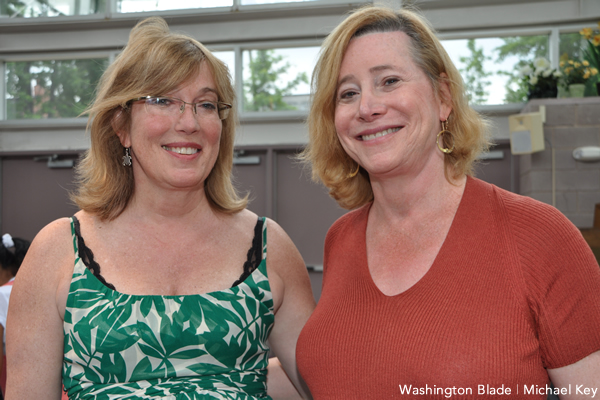
Dr. Marci Bowers and Dr. Dana Beyer (Washington Blade file photo by Michael Key)
Shannon Minter, a trans man and legal director at the National Center for Lesbian Rights, says so far he’s been impressed with Jenner’s poise.
“Of course no one person can represent the diversity of any community, but Caitlin’s visibility has been hugely positive and has helped millions of people become more aware and supportive of transgender people,” Minter wrote in an e-mail to the Blade. “I know from my own experience as an advocate that she has helped many parents be more accepting of their transgender children. Her experience is different in some ways than that of trans people who are not as wealthy, but she seems to be keenly aware of that and to take her responsibility as a spokesperson and role model very seriously. I have been impressed by her thoughtfulness and especially by her concern for transgender children.”
Transgender author and teacher Alex Myers says it’s been amazing how much dialogue Jenner has generated among his trans friends and colleagues.
“My perspective on it is that she’s giving the movement and the identity better publicity than we’ve gotten in a long time, not even just coming from her and her own presentation but from the questions people are having,” Myers says. “We don’t want her to be the only voice, but I think she’s been well received and I think it’s a much more positive representation than anything else I can think of in recent history.”
Aside from Jenner’s reality show fame and status as an Olympic icon, Myers says stories of trans women tend to play well to middle America.
“I think the media in general is much more fascinated by trans women,” he says. “It’s much more perplexing for a guy who has all this privilege and status — why would they want to give that up? It makes for a much more sensational tale. When trans women transition, they often present in this very glamorous, very cisgender and dramatic way and that’s just not the case with trans men. We look like these short, dumpy guys and we don’t make such a sensational story for Joe Q. Public.”
Earline Budd says there’s a big difference between Jenner and many of the trans women she’s worked with over many years on Washington’s streets.
“I strongly support her but at the end of the day, I do feel it would serve her best if she did reach out to individuals such as myself who are leaders in the African-American transgender community who understand the struggles and the hardship and to engage folks,” Budd says. “She will never be the model for the African-American transgender experience. She doesn’t come from the same plight as many of us. Even my own personal experience of being openly HIV-positive, having been homeless before, having been an addict, having been incarcerated. I understand she is doing some work with some African-American trans women, helping one woman go through nursing school and that is really great, but … at the end of the day, we can’t put all our hopes and needs on one person. … We need to come together and figure out how we can put revenue behind where the real needs are.”

Earline Budd(Washington Blade file photo by Michael Key)
Further adding diversity to the wide umbrella that encompasses the trans experience, author and academic Genny Beemyn, who identifies as gender nonconforming, says Jenner is “an anachronism in a lot of ways.”
“It’s amazing how much visibility this has brought,” Beemyn says. “I have gotten more media inquiries in the last few months than I’ve gotten in the last few years combined. It’s unreal the number of people who are doing stories, not necessarily on Caitlyn going public, but trans issues. … I think there is some danger in her becoming the face of transgender people. Even with some of the other narratives that are out there, such as Laverne Cox and Janet Mock, they are all conventional, very feminine, trans women so we’re still seeing some erasure for people who don’t have the ability to look so glamorous or like cis women.”
Even with the concerns, Beyer says the visibility Jenner brings to the national dialogue far outweighs any concerns. She, too, has been barraged with requests for comment.
“A lot of these newspapers really never gave a damn about transgender people until a few months ago,” Beyer says. “This is a huge deal. People are calling to be educated. Nobody cared enough before Caitlyn to want to be educated. We are going to look back at this as being a post-Jenner moment and we’ll talk about things pre-Jenner and post-Jenner. Everything has changed as a result of this because all of a sudden now when these issues come up, people will have somebody to relate all this to. They don’t really know her, but it will be a lot easier to make the sale. ‘Oh really, you’re going to tell Caitlyn Jenner she can’t use the women’s restroom?’”
Beyer says it’s a new era of visibility and progress.
“Who were our options before? (Convicted murderer) Michelle Kosilek? Chelsea Manning? Somebody whom half the population thinks is a traitor? It’s a big difference to go from, ‘Hi, I’m a trans woman,’ ‘Oh, like Chelsea Manning,’ to ‘Oh, like Caitlyn Jenner.’ That changes everything. She’s a great athlete and an American hero and we’re basking in the reflections of that hero status. In today’s America, that’s about as good as it gets.”
a&e features
Looking back at the 10 biggest A&E stories of 2025
‘Wicked,’ Lady Gaga’s new era, ‘Sexy’ Bailey and more

Although 2025 was a year marked by countless attacks on trans rights and political setbacks, the year also saw brilliant queer artists continuing to create art. From Cannes and Sundance Award winners now vying for Oscar consideration to pop icons entering new stages of their careers, queer people persevered to tell their stories through different media.
With the state of the world so uncertain, perhaps there’s no more vital time to celebrate our wins, as seen through some of this year’s top pop culture moments. While there’s no collection of 10 stories that fully encompass “the most important” news, here are some events that got the gays going:
10. ‘Mysterious Gaze of the Flamingo’ wins big at Cannes

The Cannes Film Festival has become a crucial start for films hoping to make their way to the Oscars, and first-time director Diego Céspedes won the top Un Certain Regard prize for his intimate western “The Mysterious Gaze of the Flamingo.” The film is set in the ‘80s and is intended as an allegory for the AIDS epidemic. Seeing a film that unpacks vital queer history win one of the most coveted awards at Cannes has been a huge point of pride in the independent filmmaking community.
Since the film bowed at Cannes, it has been selected as Chile’s Oscar entry in the Best International Feature race. Speaking with The Blade during the film’s AFI Fest run in October, Céspedes said: At first, I was kind of scared to have this campaign position in the times that we’re living [in] here. But at the same time, I think the Oscars mean a huge platform — a huge platform for art and politics.”
9. ‘The Last of Us’ returns for an even gayer season 2
While the first season of The Last of Us gave us one of TV’s most heartbreaking queer love stories in the episode “Long, Long Time,” Season 2 doubled down on its commitment to queer storytelling with the blossoming relationship between Ellie (Bella Ramsey) and Dina (Isabela Merced). The show expanded on the pair’s relationship in the original video game, making it perhaps the central dynamic to the entire season. That unfortunately came with more homophobic backlash on the internet, but those who checked out all the episodes saw a tender relationship form amid the show’s post-apocalyptic, often violent backdrop. For their performance, Ramsey was once again nominated for an Emmy, but Merced deserved just as much awards attention.
8. ‘Emilia Pérez’ sparks controversy
Jacques Audiard’s genre-bending trans musical “Emilia Pérez” proved to be an awards season juggernaut this time last year, winning the Golden Globe for Best Musical/Comedy. But when the lead star Karla Sofia Gascón’s racist, sexist, and homophobic old tweets resurfaced, the film’s Oscar campaign became a tough sell, especially after Netflix had tried so hard to sell Emilia Pérez as the “progressive” film to vote for. Mind you, the film had already received significant backlash from LGBTQ+ audiences and the Mexican community for its stereotypical and reductive portrayals, but the Gascón controversy made what was originally just social media backlash impossible to ignore. The only person who seemed to come out of the whole debacle unscathed was Zoe Saldaña, who won the Oscar for Best Supporting Actress over Ariana Grande.
7. ‘Sorry, Baby’ establishes Eva Victor as major talent
Back in January at the Sundance Film Festival, Eva Victor (known by many for her brand of sketch comedy) premiered their directorial debut “Sorry, Baby” to rave reviews, even winning the Waldo Salt Screening Award. Victor shadowed Jane Schoenbrun on the set of “I Saw the TV Glow,” and seeing Victor come into their own and establish such a strong voice immediately made them one of independent cinema’s most exciting new voices. A memorable scene in the film sees the main character, Agnes (played by Victor), struggling to check a box for male or female, just one example of how naturally queerness is woven into the fabric of the story.
Most recently, Victor was nominated for a Golden Globe for her performance in the film, and she’s represented in a category alongside Jennifer Lawrence (“Die My Love”), Jessie Buckley (“Hamnet”), Julia Roberts (“After the Hunt”), Renate Reinsve (“Sentimental Value”) and Tessa Thompson (“Hedda”). The film also received four Independent Spirit Award nominations overall.
6. Paul Reubens comes out in posthumous doc

While Paul Reubens never publicly came out as gay before passing away in 2023, the two-part documentary “Pee-wee as Himself” premiered back in May on HBO Max, giving the legendary comedian a chance to posthumously open up to the world. Directed by Matt Wolf, the documentary explores how Reubens found his alter ego Pee-Wee Herman and why he kept his private life private.
The documentary won an Emmy in the Outstanding Documentary or Nonfiction Special category and remains one of the most critically acclaimed titles of the year with a 100% Rotten Tomatoes score. Also worth noting, the National Geographic documentary Sally told the posthumous coming out story of Sally Ride through the help of her long-time partner, Tam O’Shaughnessy.
5. Lady Gaga releases ‘Mayhem’
Lady Gaga entered a new phase of her musical career with the release of Mayhem, her seventh album to date. From the frenzy-inducing pop hit Abracadabra to the memorable Bruno Mars duet featured on “Die With a Smile,” seeing Gaga return to her roots and make an album for the most die-hard of fans was especially rewarding after the underwhelming film releases of “House of Gucci” and “Joker: Folie à Deux.” Gaga has been touring with The Mayhem Ball since July, her first arena tour since 2018. She even extended her tour into 2026 with more North American dates, so the party isn’t stopping anytime soon. And Gaga is even set to make an appearance next May in “The Devil Wears Prada 2.”
4. Cynthia Erivo, Ariana Grande perform at the Oscars

While “Wicked: For Good” didn’t quite reach the heights of the first film, we will forever have Cynthia Erivo and Ariana Grande’s breathtaking live performance that opened the 97th Academy Awards. The pair sang a rendition of “Over the Rainbow,” “Home,” and “Defying Gravity,” paying proper homage to the original 1939 “Wizard of Oz.” Even non-Wicked fans can’t deny how magical and brilliantly staged this performance was. With both Erivo and Grande up for acting Oscars last year, they’re hoping to repeat success and make history with consecutive nominations. Either way, let’s hope there’s another live performance in the making, especially with two new original songs (The Girl in the Bubble and No Place Like Home) in the mix.
3. Indya Moore speaks out against Ryan Murphy
Indya Moore has consistently used social media as a platform for activism, and in September, posted a 30-minute Instagram live speaking out against “Pose” co-creator Ryan Murphy. Moore claimed that Murphy wasn’t being a true activist for trans people. “Ryan Murphy, we need you to do more. You need to address the racism, the violence, and the targeting of people on your productions, Ryan Murphy. You do need to make sure trans people are paid equally. Yes, Janet did the right thing,” Moore said. Murphy was also back in the headlines this year for the critically panned “All’s Fair” and the controversial “Monster: The Ed Gein Story” starring Laurie Metcalf and Charlie Hunnam.
2. Cole Escola wins Tony for Best Leading Actor
Few pop culture moments this year brought us together more than Cole Escola winning a Tony award for “Oh, Mary!” the Broadway show they created, wrote and starred in (we love a triple threat!) Escola made history by becoming the first nonbinary person to win a Tony in the leading actor category, and seeing them excitedly rush to the stage wearing a Bernadette Peters-inspired gown instantly became a viral social media moment.
The cherry on top of Escola’s major moment is the recent news that they are writing a Miss Piggy movie with Jennifer Lawrence and Emma Stone producing — news that also broke the internet for the better. We cannot wait!
1. Jonathan Bailey makes gay history as ‘Sexiest Man Alive’

The same year as his on-screen roles in blockbusters “Jurassic World Rebirth” and “Wicked: For Good,” Jonathan Bailey made history as the first openly gay man to be named People magazine’s “Sexiest Man Alive.” The fact that it took 40 years for an openly gay man to earn the title is a signifier of how far we still have to go with queer representation, and seeing Bailey celebrated is just one small step in the right direction.
“There’s so many people that want to do brilliant stuff who feel like they can’t,” he told PEOPLE, “and I know the LGBT sector is under immense threat at the moment. So it’s been amazing to meet people who have the expertise and see potential that I could have only dreamed of.” In 2024, Bailey founded the charity titled The Shameless Fund, which raises money for LGBTQ+ organizations.
a&e features
Your guide to D.C.’s queer New Year’s Eve parties
Ring in 2026 with drag, leather, Champagne, and more

With Christmas in the rear view mirror, we can turn our attention to ringing in a much-anticipated New Year with a slew of local LGBTQ parties. Here’s what’s on tap.
Pitchers
This spacious Adams Morgan bar is hosting the “Pitchers’ Perfect New Year’s Eve.” There will be a midnight Champagne toast, the ball drop on the big screens, and no cover, all night long. The bar doesn’t close until 4 a.m., and the kitchen will be open late (though not until close). All five floors will be open for the party, and party favors are promised.
Trade
D.C.’s hottest bar/club combo is leaning into the Shark motif with its NYE party, “Feeding Frenzy.” The party is a “glitterati-infused Naughty-cal New Year’s Even in the Shark Tank, where the boats are churning and the sharks are circling.” Trade also boasts no cover charge, with doors opening at 5 p.m. and the aforementioned Shark Tank opening at 9 p.m.. Four DJs will be spread across the two spaces; midnight hostess is played by Vagenesis and the two sea sirens sensuously calling are Anathema and Justin Williams.
Number Nine
While Trade will have two DJs as part of one party, Number Nine will host two separate parties, one on each floor. The first floor is classic Number Nine, a more casual-style event with the countdown on TVs and a Champagne midnight toast. There will be no cover and doors open at 5 p.m. Upstairs will be hosted by Capital Sapphics for its second annual NYE gathering. Tickets (about $50) include a midnight Champagne toast, curated drink menu, sapphic DJ set by Rijak, and tarot readings by Yooji.
Crush
Crush will kick off NYE with a free drag bingo at 8 p.m. for the early birds. Post-bingo, there will be a cover for the rest of the evening, featuring two DJs. The cover ($20 limited pre-sale that includes line skip until 11 p.m.; $25 at the door after 9 p.m.) includes one free N/A or Crush, a Champagne toast, and party favors (“the legal kind”). More details on Eventbrite.
Bunker
This subterranean lair is hosting a NYE party entitled “Frosted & Fur: Aspen After Dark New Year’s Eve Celebration.” Arriety from Rupaul Season 15 is set to host, with International DJ Alex Lo. Doors open at 9 p.m. and close at 3 p.m.; there is a midnight Champagne toast. Cover is $25, plus an optional $99 all-you-can-drink package.
District Eagle
This leather-focused bar is hosting “Bulge” for its NYE party. Each District Eagle floor will have its own music and vibe. Doors run from 7 p.m.-3 a.m. and cover is $15. There will be a Champagne toast at midnight, as well as drink specials during the event.
Kiki, Shakiki
Kiki and its new sister bar program Shakiki (in the old Shakers space) will have the same type of party on New Year’s Eve. Both bars open their doors at 5 p.m. and stay open until closing time. Both will offer a Champagne toast at midnight. At Kiki, DJ Vodkatrina will play; at Shakiki, it’ll be DJ Alex Love. Kiki keeps the party going on New Year’s Day, opening at 2 p.m., to celebrate Kiki’s fourth anniversary. There will be a drag show at 6 p.m. and an early 2000s dance party 4-8 p.m.
Spark
This bar and its new menu of alcoholic and twin N/A drinks will host a NYE party with music by DJ Emerald Fox. Given this menu, there will be a complimentary toast at midnight, guests can choose either sparkling wine with or without alcohol. No cover, but Spark is also offering optional wristbands at the door for $35 open bar 11 p.m.-1 a.m. (mid-shelf liquor & all NA drinks).
a&e features
Local, last-minute holiday gift ideas
Celebrate the season while supporting area businesses

The DowntownDC Holiday Market is bustling. Union Station is decked out with its annual Christmas tree. Washingtonians have wrapped their houses and apartment balconies with festive lights and holiday decorations. The holiday season is here. And with stockings to fill and empty space under the tree, Washington’s local shops and artists have plenty to offer.
Show your LGBTQ and D.C. pride with the Washington Blade’s annual holiday gift guide.
To embrace the holiday buzz: The Blanco Nwèl cocktail from Alchy Cocktails. This Caribbean eggnog is one of Alchy Cocktail’s seasonal holiday cocktails. The flavor profile is similar to coquito, a traditional Puerto Rican Christmas drink with a coconut base. As a queer and Caribbean-owned business, Alchy Cocktails has been based out of Washington since 2021. Blanco Nwèl is available in both cocktail ($24) and mocktail ($12) online and at a variety of holiday markets, including the Tingey Plaza Holiday Market, the Flea Market at Eastern Market, Union Station’s Main Hall Holiday Market, and more. ($24)
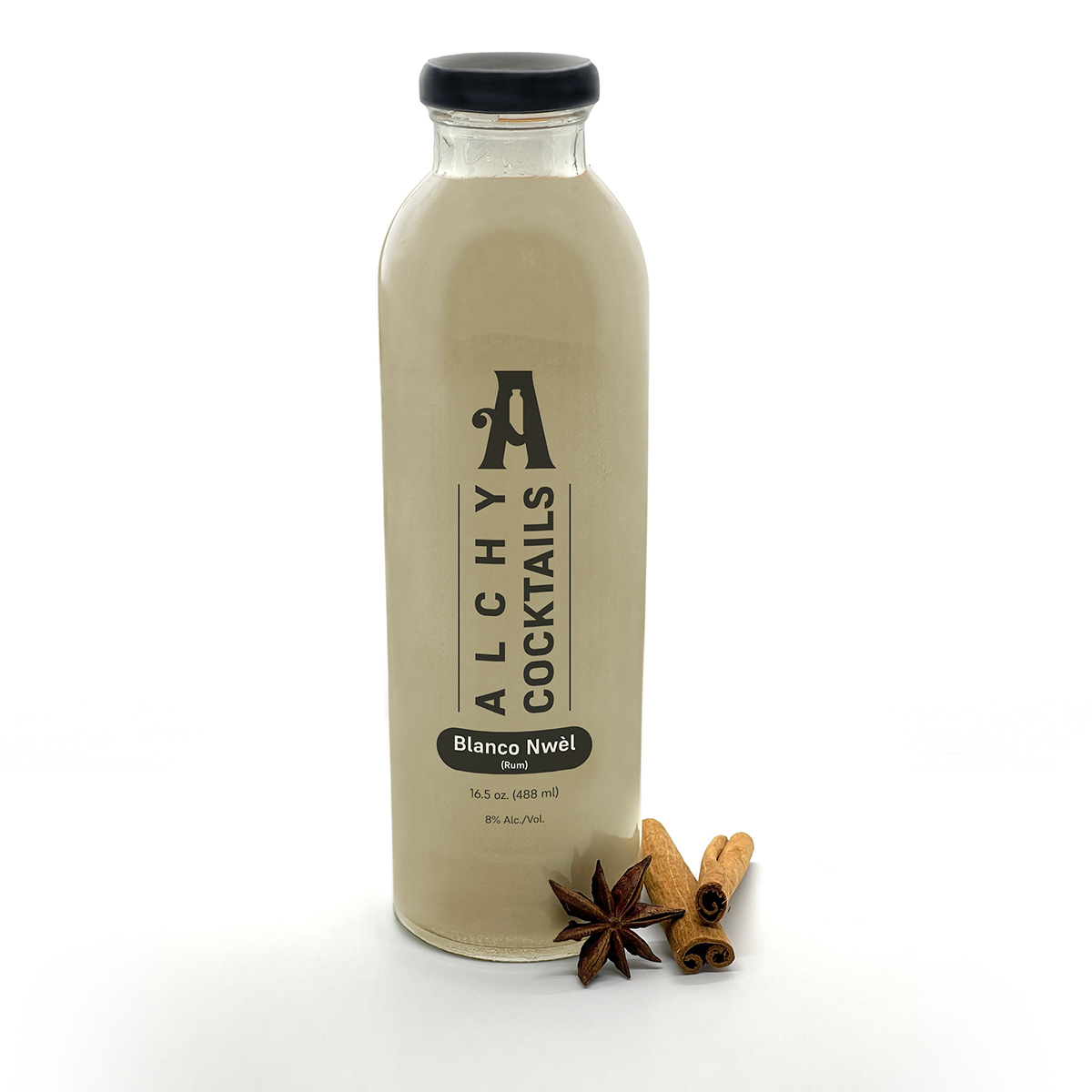
A spicy bite: Gordy’s Cajun Okra from Salt and Sundry. These spicy, tangy pickles pull on Southern Cajun-style flavors, packing a punch with paprika, cayenne, and more. Gordy’s is an LGBTQ-owned and Washington-based brand, making this gift an opportunity to support a local LGBTQ business straight from the jar. This pantry staple is available on Salt & Sundry’s website and at its locations in Union Market, Logan Circle, and its Georgetown holiday pop-up store. ($14)
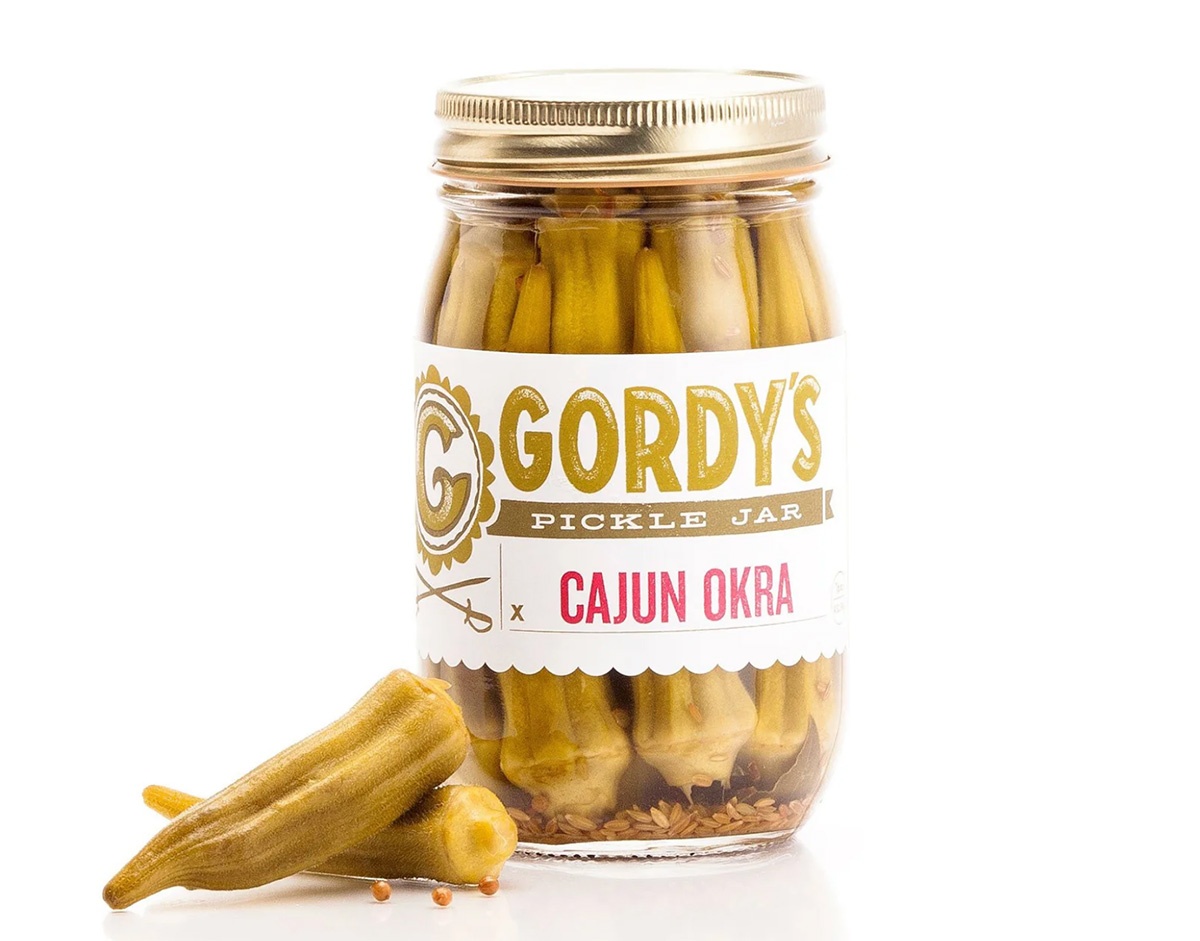

To celebrate Washington pride: The DC Landmark Tote Bag from The Neighborgoods. Native Washingtonians, visitors, friends and family alike will find something to love about this Washington-themed tote bag. Food trucks, the 9:30 Club, the Metro logo and pandas from the National Zoo are just some of the city’s landmarks depicted across the tote in a red, white, and blue color palette. The tote is a part of the DC Landmarks collection, which donates 10 percent of its sales to the American Civil Liberties Union. The Neighborgoods itself is a local, woman-owned business built out of a passion for screen-printing in 2013. The 100 percent cotton canvas tote is for sale online or at the DowntownDC Holiday Market. ($22)
To give friends and family their flowers: The Flowers Bandana from All Very Goods. This 100 percent cotton bandana was designed in Washington and hand printed in India. Its uniqueness comes in being covered with the faces of Black women, representing a “love letter to all women but especially Black women,” according to All Very Goods. The Black woman-owned and operated business, based out of Northwest Washington, has a mission to celebrate diversity and representation through its products. The bandana intends to give Black women their “flowers.” The Flowers bandana is available for purchase online. ($24)
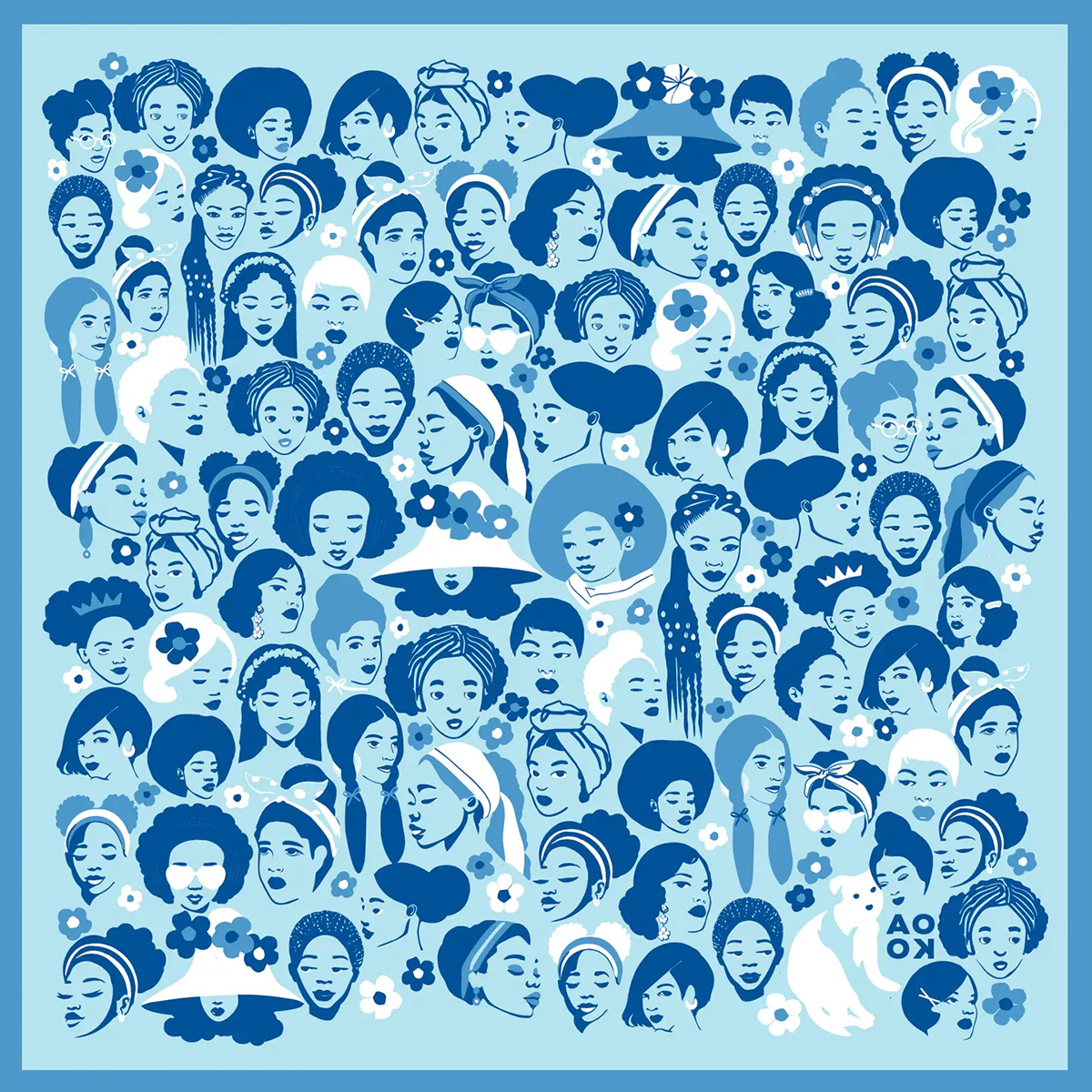
To unlock culinary creativity: The Curious Chef Gift Collection from Each Peach Market. This customizable collection of kitchen oddities — ranging from tinned fish to chili oil — is a quirky gift for the most inventive chefs. The collection is available in a Standard Santa, Extra Goodies and Super Holiday Size for up to $165. The Washington-based market, founded in 2013, permits customers to make the collection special by specifying what unique ingredients are packaged, including products made by local or LGBTQ brands. Each Peach Market offers assembly and pick up in-person at its Mount Pleasant shop and also offers local delivery and nationwide shipping via its website. ($85)
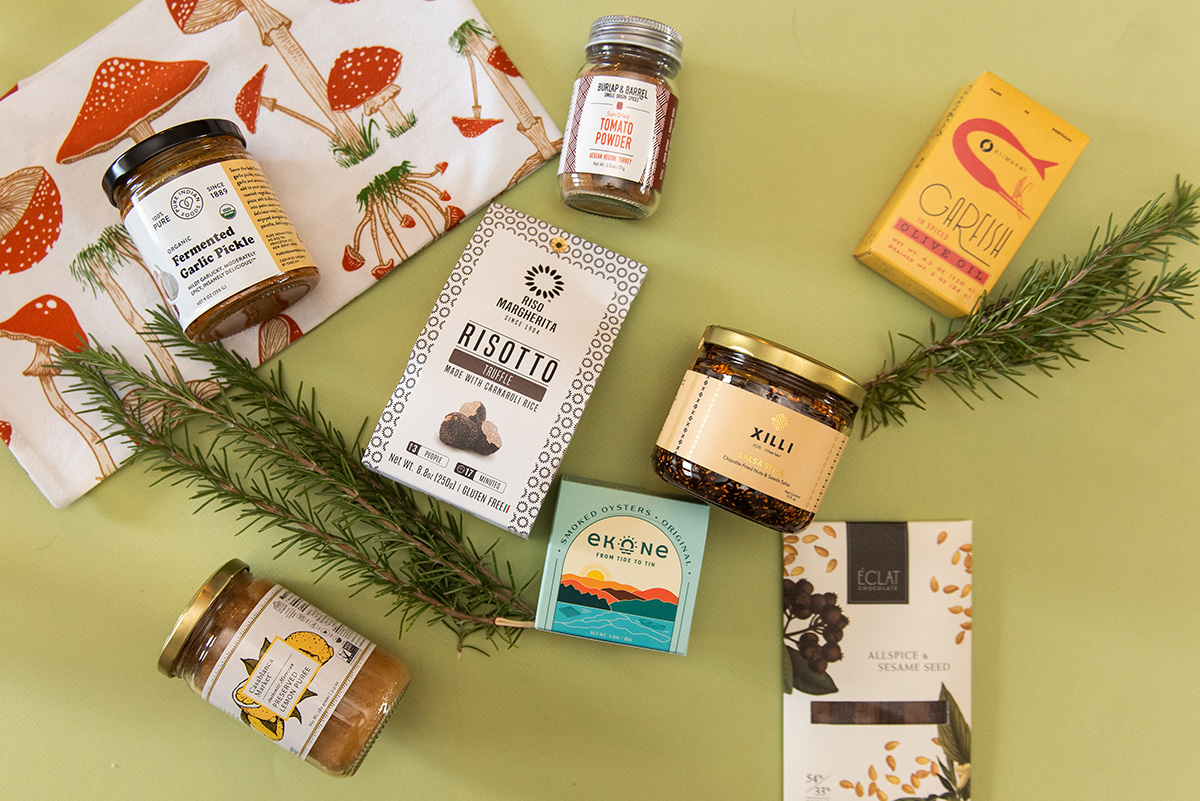
To give a touch of sweetness: The DC Landmark Chocolate Covered Oreo Holiday Cookies from Capital Candy Jar. Wrapped in a festive red bow, this box of nine cookies embraces love for Washington and the holiday season in one. Among the dark and milk chocolate covered cookies are images of the U.S. Capitol, the White House, the Lincoln Memorial, the Jefferson Memorial and festive hollies. The treat, packaged in a Hill East facility just a few blocks from the Capitol, is available for purchase online and at the DowntownDC Holiday Market. ($23.95)

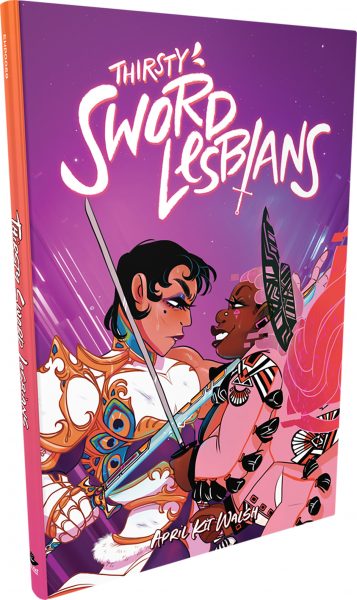
To celebrate queer gaming: Thirsty Sword Lesbians from Labyrinth Games & Puzzles. This roleplaying game embraces lesbian culture by unlocking a world of swords, romance, and battle. Ideal for group settings, the book presents a system of world building and character identities that are best brought to life by creative minds. Labyrinth, which has been a local Washington business for more than 15 years, celebrates non-digital fun through games and puzzles that connect the community. This gift is offered online and at Labyrinth’s Capitol Hill location. ($29.99)
To make a bold statement: The “Resist” T-shirt from Propper Topper. This locally screen-printed black tee features the Washington flag designed within a raised fist, symbolizing both Washington pride, and political resistance. The shirt is made exclusively by Propper Topper, a local Washington business that evolved from a hat shop to a gift store since opening in 1990. The tri-blend unisex shirt is available both for pickup at Propper Topper’s Cathedral Heights location and shipping via the online site. ($32)
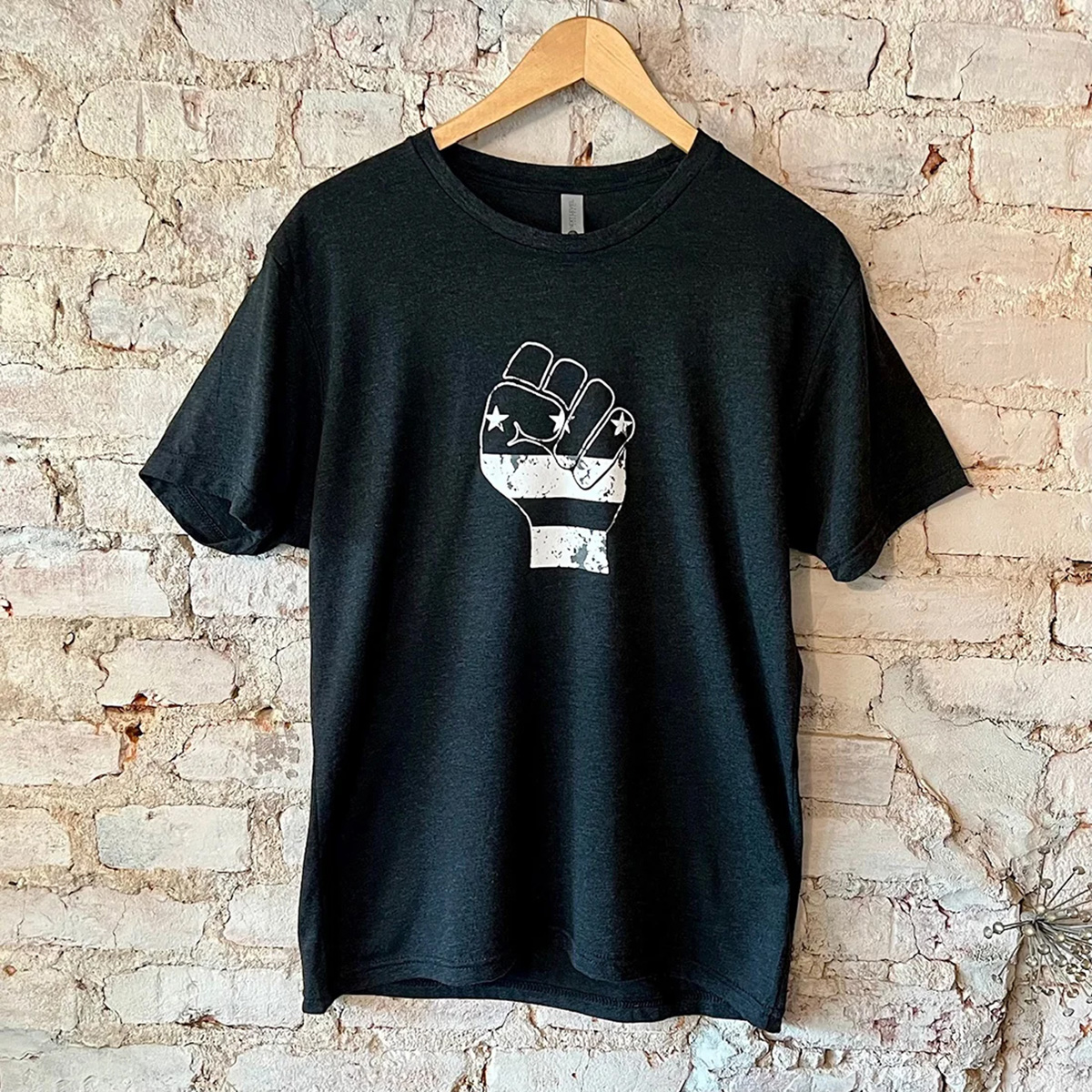
To keep it c(g)lassy: The Glass Ball earrings from Blue Moon Aquarius. Gifting can rarely go wrong when it comes to a new pair of earrings. The unique statement earrings — made of polymer clay, glass, and 18k gold plating over surgical steel — are hand cut, sanded and assembled in Washington, meaning each set is unique. Blue Moon Aquarius, a local brand, is known for its small batch jewelry and home decor designed with clay materials. Available in oxblood, hunter green, lavender, and bluestone color palettes, these earrings are available for purchase on Blue Moon Aquarius’ website and at the DowntownDC Holiday Market. ($48)
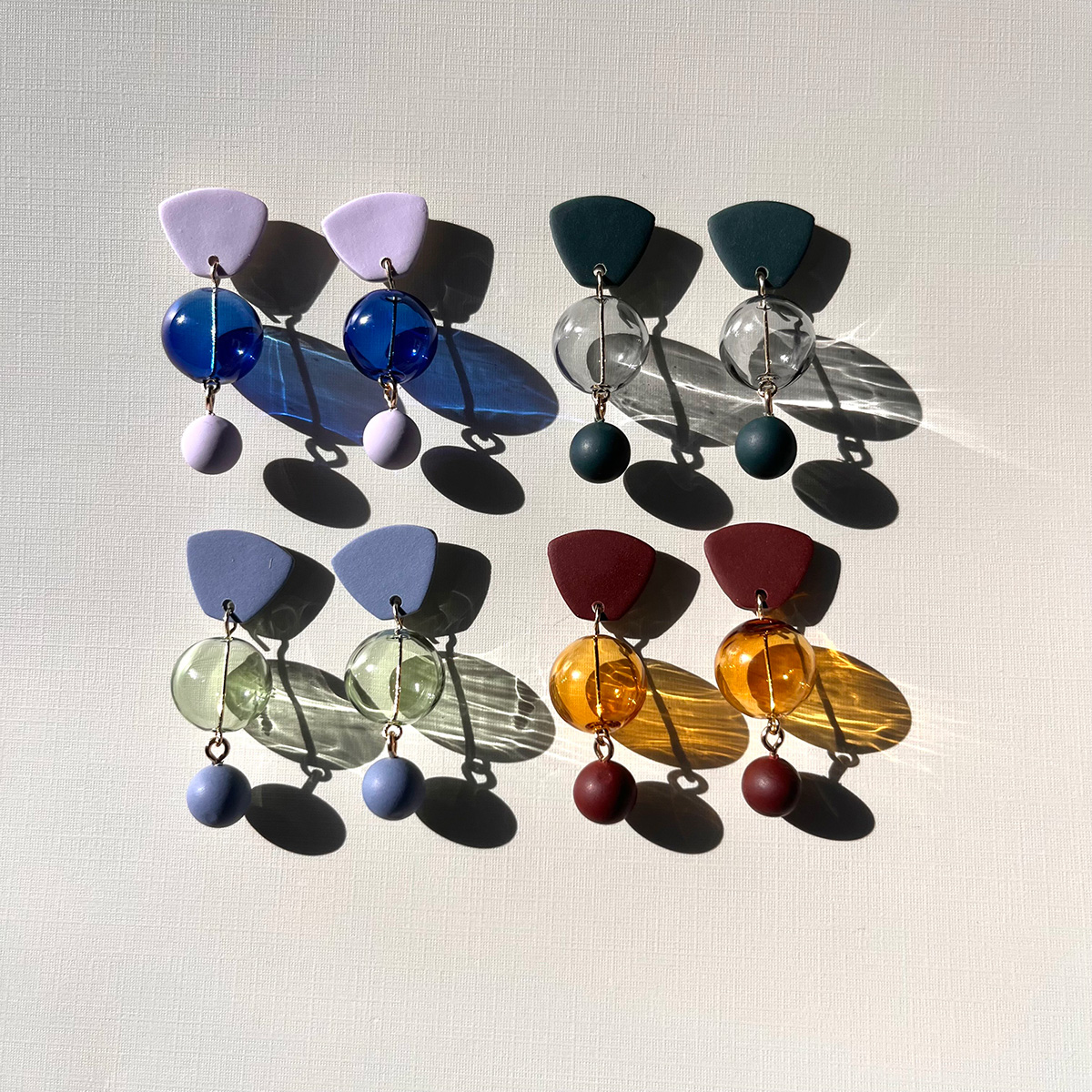
To elevate a holiday tea or charcuterie party: The Honey Flight: Tea Lover’s Selection from BannerBee. This local honey company presents the ideal gift to make cozying up with a cup of tea slightly more special. The Honey Flight contains three types of raw wildflower honey infused with fair trade Ugandan vanilla bean, chai spices, and locally sourced lemon thyme herb. The gift is also an opportunity to uplift a family company based in the Mid-Atlantic that offers all-natural, sustainable products. The flight is available online, at the DowntownDC Holiday Market or at the Arlington Courthouse and Dupont Farmers’ Markets. ($36)
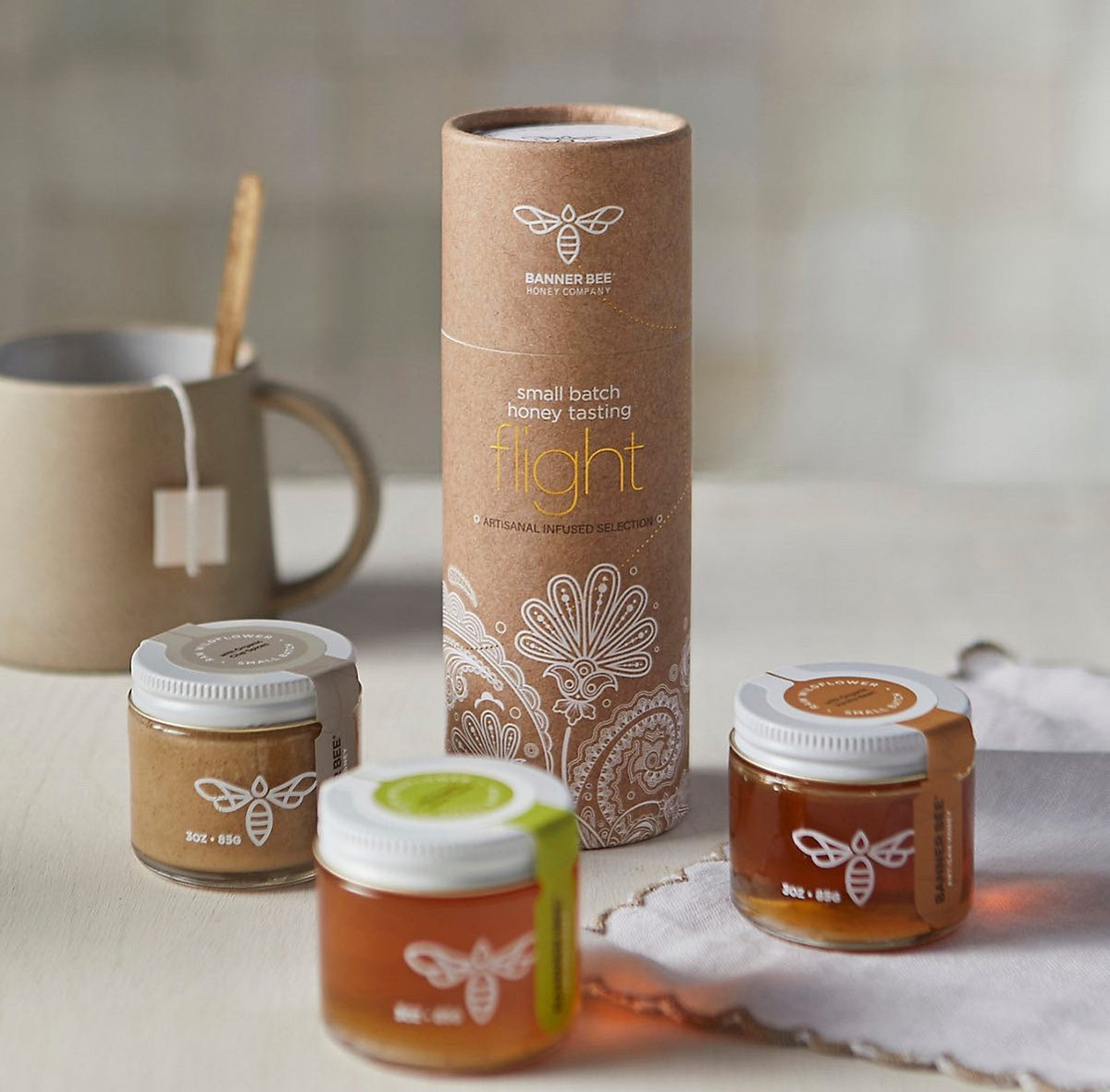
For Baltimore shoppers: If you’re in Charm City, don’t miss Balston Mercantile, opened by a gay couple in June. Their gorgeous shop in the Hampden neighborhood offers an array of unique, upscale finds, from barware and artwork to cookbooks and home decor and more. (849 W. 36th St.)





